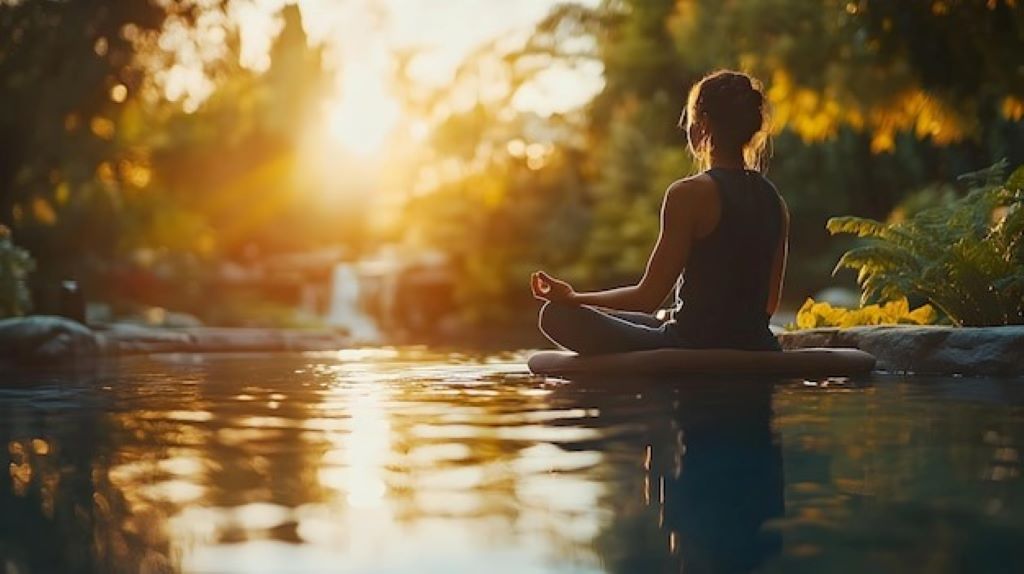
In the fast-paced world of today, where our minds are often cluttered with endless distractions, finding ways to cultivate inner peace and clarity is more important than ever. One ancient practice, Koan meditation, offers a profound route toward awakening deeper understanding beyond logical thinking. Yet, for many Western beginners, koans can feel mystifying or inaccessible — shrouded in Zen Buddhist tradition, dense language, and cultural distance.
This article demystifies koan meditation with practical examples and clear guidance designed specifically for Western newcomers. You’ll learn what koans are, how to meditate with them effectively, and discover relatable koan examples that spark insight and mindful awareness on your personal journey. By the end, you’ll be equipped with the tools to start your own koan meditation practice confidently, enriching your mind and spirit.
What Is Koan Meditation? A Simple Introduction
Koan meditation stems from Zen Buddhism and involves contemplating paradoxical or seemingly nonsensical questions, statements, or stories—called koans. Unlike regular meditation, which may focus on breath or bodily sensations, koan meditation challenges the intellect to move beyond rational thought and open awareness to direct experience.
A classic koan might be something like:
- “What is the sound of one hand clapping?”
- “Does a dog have Buddha nature?”
- “Show me your original face before your parents were born.”
At first glance, these questions don’t make logical sense, and that’s exactly the point. The koan’s paradox is designed to interrupt normal patterns of thinking, encouraging the student to abandon conceptual reasoning and touch a deeper dimension of awareness or enlightenment.
Why Koan Meditation Appeals to Western Beginners
The Western mind often seeks clarity, direct answers, and logical pathways. So, koans can feel frustrating or confusing. Still, because they break through ordinary mental habits, koan meditation is gaining popularity in the West for several key reasons:
- Encourages creative problem-solving: Koans force you to think outside the box, similar to puzzles or riddles, promoting novel insights.
- Breaks mental rigidity: Regular engagement helps loosen habitual thought patterns linked to anxiety and overthinking.
- Bridges spirituality and mindfulness: It blends zen philosophy with a practical meditation method.
- Provides personal meaning: Unlike purely technique-based meditation, koans invite individualized exploration and discovery.
For beginners, starting with accessible koan examples and clear instructions helps alleviate the mystery and opens the door to transformative practice.
How to Practice Koan Meditation: A Beginner’s Step-by-Step Guide
If you’re new to koan meditation, it’s essential to approach it with patience and simplicity. Here’s how to get started effectively:
-
Get Comfortable in a Quiet Space
Choose a calm, distraction-free environment. Sit comfortably with your back straight but relaxed, either on a chair or meditation cushion.
-
Choose a Koan Suitable for Beginners
Start with a simple, intriguing koan. We will suggest a few below.
-
Focus on Your Koan Mindfully
Close your eyes and gently bring the koan to your mind. Repeat it silently or aloud without rushing to solve it intellectually.
-
Let Go of Logical Reasoning
When your mind wants to answer verbally or rationally, notice it without judgment, then gently return to the koan. The aim is not to “solve” but to experience the koan fully.
-
Observe Your Thoughts and Feelings
Notice emotions, images, or shifts in awareness stirred by the koan. Let the experience unfold naturally without forcing.
-
Practice Regularly
Start with 10–15 minutes daily, increasing as you feel comfortable. Consistency is key.

Practical Koan Meditation Examples for Western Beginners
Below are some accessible koans with explanations on how to approach them:
1: “What is the sound of one hand clapping?”
- Why it works for beginners: This koan challenges your assumptions about sound and silence. Usually, we associate clapping with two hands; one hand alone producing sound defies logic.
- How to meditate on it: Close your eyes and repeat the phrase gently. When you imagine clapping, shift focus from intellectual definitions of sound to direct bodily sensations. Can you feel any subtle “sound” or energy from one hand alone? Embrace the paradox instead of trying to find a conventional answer.
2: “Does a dog have Buddha nature?”
- Background: This koan originates from Zen teachings that all beings have an innate enlightened nature.
- How to meditate on it: Reflect on your thoughts about animals and enlightenment. What feelings arise when you link a dog—or any living creature—to such profound spiritual potential? Allow answers to emerge intuitively rather than logically deciding yes or no.
3: “Show me your original face before your parents were born.”
- Why it matters: This koan invites you to explore identity beyond physical or social conditioning.
- How to meditate on it: Sit quietly and gently probe the question without searching for a visual image. What does “original face” mean to you when you let go of biography and self-concept? This koan encourages experiencing your true nature beyond time and form.
4: “If you meet the Buddha on the road, kill him.”
- Explanation: This startling koan suggests not clinging to any fixed idea, even revered ones, including Buddha.
- How to meditate on it: Feel into the paradox of the instruction. What attachments or beliefs might you be holding unconsciously? Can you “kill” fixed concepts to free yourself mentally?
Common Challenges and How to Overcome Them
Even with simple koans, beginners may experience hurdles like frustration, impatience, or confusion. Here’s guidance:
- Frustration from no clear answers: Remember, the process is the point—not the solution. The koan helps dismantle rational habits, which takes time.
- Distraction and wandering mind: Use your breath as an anchor momentarily before returning to the koan.
- Feeling stuck or stagnated: Try journaling your experience after meditation to capture insights outside the session.
- Doubt about correctness: There is no “right” way to experience a koan. Be gentle and curious with yourself.
The Benefits of Koan Meditation for Western Practitioners
Practicing koan meditation regularly can yield multiple benefits:
- Enhanced mental clarity and creativity
- Greater emotional resilience and stability
- Deeper spiritual insight and mindfulness
- Reduced stress by breaking habitual thought loops
- Expanded awareness beyond dualistic thinking
Many Western meditators report that koan practice complements secular mindfulness and provides new depth to their spiritual exploration.
Frequently Asked Questions (FAQs) About Koan Meditation
- Can I practice koan meditation without being a Buddhist?
Yes! Koan meditation is a mindful inquiry that can benefit anyone regardless of religious background.
- How long should a koan meditation session last?
Start with 10–15 minutes and increase gradually to 30 minutes or more as comfortable.
- Do I need a Zen master to guide me?
While guidance from an experienced teacher can help, beginners can start practicing independently using clear koan examples and instructions.
- Can koan meditation trigger emotional discomfort?
Sometimes, confronting paradoxes may stir uncomfortable feelings. Approach practice gently and seek support if needed.
- How do I know if my koan meditation is “working”?
Progress is subtle and personal. Notice increased calmness, insight, or openness rather than “solving” koans.
Conclusion: Embrace Koan Meditation and Transform Your Mind
Koan meditation offers Western beginners a powerful way to step beyond habitual thinking into new realms of self-awareness and spiritual insight. Starting with accessible koan examples—such as the sound of one hand clapping or the question of Buddha nature in all beings—you can cultivate a practice that challenges and expands your mind while anchoring you in present-moment experience.
If you’re ready to unlock ancient wisdom through koan meditation, set aside a few minutes daily to engage with these paradoxes. Be patient with yourself, stay curious, and open to unexpected insights.
Begin your koan meditation journey today—discover how a simple, puzzling question can open doors to deeper peace, creativity, and understanding in your busy life. Your mind and spirit will thank you.
Call to Action:
If you found this guide helpful, try your first koan meditation tonight and share your experience in the comments below. For more tips on mindful living and meditation techniques, subscribe to our blog and join our community of seekers exploring the transformative power of ancient practices in the modern world!
Related Topics:
Wellness Wonders: Innovative Technologies Transforming the Way We Thrive
Mental Health Matters: Prioritizing Your Mental Wellbeing in Modern Life
